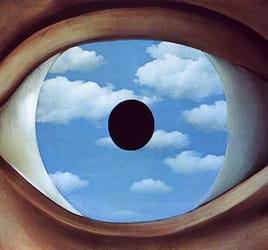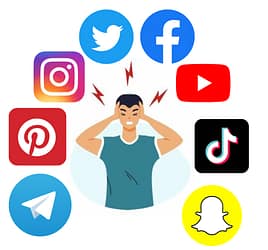
The Creativity of Covfefe
One of the first things I do in my course on Creativity and Innovation is ask the class what they think defines a ‘creative’ idea. After some discussion, we usually arrive easily at the definition commonly used in the research literature: a creative idea is an idea that is both original and feasible (or at least appropriate to the domain it belongs to). Ideas that are only feasible but not original are boring and routine; ideas that are highly original but not feasible are weird, eccentric, or even –if we’re feeling a bit cruel– pathological.
This is easily illustrated with the Unusual Uses Task, where participants have to come up with creative uses for a common object, such as a brick. ‘Paving a street’ would be highly feasible, but not original – and hence not creative. ‘Grinding it to powder and using it as make-up’ is (moderately) feasible and original – a creative idea. But what if somebody responds by calling out ‘camel’? It’s an original response, sure. But is it feasible or appropriate? What could it even mean?
“What was the meaning of ‘covfefe’ – if it had a meaning, indeed?”
I was reminded of this thought experiment when Donald Trump’s famous ‘despite the constant negative press covfefe’ tweet was sent into the world, where it was greeted with howls of derision, tears of laughter, and frowns of puzzlement. What was the meaning of ‘covfefe’ – if it had a meaning, indeed? Had the US President fallen asleep while typing? Was ‘covfefe’ an indication of beginning dementia? Was there some sort of secret message (as both Trump and his press secretary Sean Spicer later hinted)? Was it conceivable that the most powerful country in the world was led by a man who could not be bothered to spell-check his tweets before hitting ‘send’?
It didn’t take long for the Internet to respond with a string of jokes and parodies: memes were created (“Keep Calm and Covfefe”), songs were composed, and wholly new Twitter users were invented; among my favourites was the demon (or Viking, or both) Covfefe the Strong (@CovfefeS), who, after tweeting “I HAVE BEEN SUMMONED” soon got into a heated Twitter argument with the Wizard Covfefe (@CovfefeW). Although most people realized early on that Trump had probably intended to tweet something about ‘negative press coverage’, this opportunity to poke fun at one of the most loathed men in the world was just too good to miss.
Measuring creativity
Whatever the White House may claim, nobody believes that ‘covfefe’ was what Trump intended to type, and a researcher using the Unusual Uses Task would immediately classify it as an invalid response. The question is, however, whether this means that the utterance has no creative value whatsoever.
When we try to assess creativity, this usually implies saying something about the person who came up with the idea. So if, in an experiment, we should decide to treat ‘covfefe’ as a valid response, it would get incorporated into the participant’s average originality score (presumably increasing it quite a bit), which in turn would be considered a relevant indicator of the participant’s creative performance. And although we can only assess originality and feasibility subjectively, we nevertheless assume that we are measuring something about the idea, and thereby something about the creator of the idea. In fact, of course, we are also measuring something about ourselves: we are measuring our own response to the idea.
“So what does it mean for people to call an idea ‘creative’, or even ‘original’?”
The associative value of ideas
So what does it mean for people to call an idea ‘creative’, or even ‘original’? Recent research suggests that this may depend on the degree to which an idea sparks new associations and ideas in the perceiver. Actually, this view has been around for some time: a creativity manual written by an advertising expert in the 1940s already stated that “a good idea has self-expanding qualities; it stimulates those who see it to add to it”[1]. However, research has only recently begun to address this notion.
For example, Sosa and Dong[2] found that ideas with greater ‘associative richness’ were judged to be more creative by experts, and a recent paper by Zhou, Wang, Song, and Wu[3] argues that people’s perception of idea originality depends on the kinds of associations that the idea activates. When presented with a highly unusual idea, people will be more likely to call it ‘original’ when they themselves have more positive associations with originality. Most recently, in her PhD project here at our faculty, Kiki de Jonge has found evidence that people’s perception of an idea’s creativity is linked to the degree of cognitive stimulation they experience from the idea.[4]
“According to this perspective, then, ‘creativity’ is not a property of an idea itself, but rather describes something that happens when the idea is perceived.”
Taking an even broader theoretical approach, Csikszentmihalyi’s[5] Systems Theory of creativity states that the ‘creativity’ of an idea is actually determined by gatekeepers in the field – basically, the experts who decide upon the quality of an idea, and who are in a position to ‘make or break’ a novel contribution (reviewers and editors come to mind). In other words, if an idea is not valued as a creative contribution by the field when it is first introduced, it actually is not creative – but it may become ‘creative’ later on, when people are able to appreciate the idea and recognize its contribution to the field. For example, according to Systems Theory, one could even say that Van Gogh’s paintings only ‘became creative’ some time after his death.
According to this perspective, then, ‘creativity’ is not a property of an idea itself, but rather describes something that happens when the idea is perceived (reminiscent of how the recently deceased Robert Pirsig described ‘quality’ in his novel Zen and the Art of Motorcycle Maintenance). Creative ideas are those ideas that somehow stimulate and captivate their audience.
Back to Covfefe
“Whatever does all this have to do with ‘covfefe’?” the reader may ask (quietly adding to him- or herself, “I thought we were going to have a laugh at Trump”). They may not like my answer. As we have seen, ‘covfefe’ was nothing if not inspiring: people across the world were stimulated to come up with the most extraordinary (well, some of them, anyway) and diverse creations and ideas. If this is not a case of ‘self-expanding qualities, stimulating those who see it to add to it’, I don’t know what is. Whatever we think of Trump and his tweets, I’d say a good argument can be made that, although the ‘covfefe’ tweet may not initially have been a creative utterance (or even intended as such), its undeniable associative value has, in the end, made it so. Donald Trump may have the last laugh after all.
References
[1] Young, J.W. (1944) A technique for producing ideas. New York, US: Advertising Publications.
[2] Sosa, R., & Dong, A. (2013). The creative assessment of rich ideas. Proceedings of the 9th ACM Conference on Creativity & Cognition, 328–331.
[3] Zhou, J., Wang, X. M., Song, L. J., & Wu, J. (2017). Is it new? Personal and contextual influences on perceptions of novelty and creativity. Journal of Applied Psychology, 102, 180-202.
[4] De Jonge, K. M. M., Rietzschel, E. F., & Van Yperen, N. W. (2017). Stimulated by novelty? The role of psychological needs and perceived creativity. Paper presented at the EAWOP conference, Dublin, Ireland.
[5] Csikszentmihalyi, M. (1999). Implications of a systems perspective for the study of creativity. In R. J. Sternberg, R. J. Sternberg (Eds.), Handbook of creativity (pp. 313-335). Cambridge, UK: Cambridge University Press.




I like the idea of creativity as an event that happens between people, and I certainly think that covfefe was creative in that sense, but I would hesitate to call Donald Trump creative, as you seem to imply in the last sentence. Calling someone or something creative is a way of giving credit for the creativity that happens, and in this case I see little reason to give Trump credit for the brief outburst of creation around covfefe. He just doesn’t know how to delete tweets.
Good point. I think that, in this matter, Trump deserves about the same amount of credit as the apple tree Isaac Newton (supposedly) sat under.